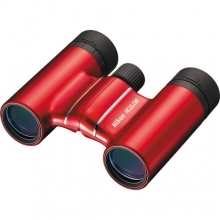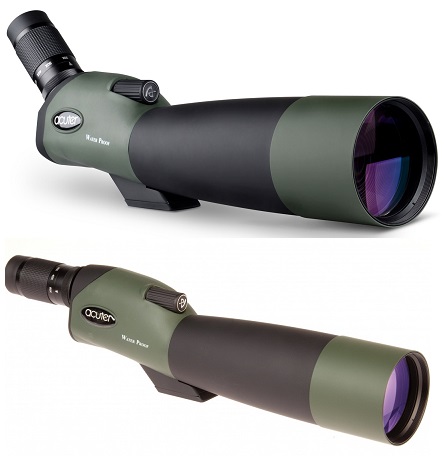|
Newsletter |
Buying a New Binocular |
||||
|
You need to know about binoculars . |
If you planed for a binocular, the first thing that you must be clear about is that whether you want the binocular for landscape view, observe animals, just get a closer look at the birds in your garden, for an action sport like horse or boat racing or for indoor concerts. This simplifies your selection of binocular according to your needs. Your selection can be based upon its magnification, its size and weight and its ability to see in dark, its power, for example. The first thing you need to understand is the basic specification of binoculars. There are a lot of details given in the specification of a binocular.
Nearly all binoculars sold with two numbers written on their casing, like this: ‘8 x 25’ or ‘10 x 42’. For a 8x25 binocular, the 8x is the magnification figure and the 25 is the measurement of the diameter that is 25mm of the objective lens – the front lens that you don't put your eye to. So, if the magnification is 8x then an object 80 meters away will seem, to your eyes, to be just 10m away. General purpose binoculars should be between 7x and 10x power. Theatre goers can choose binocular from 3x to 7x while big-game hunters would need 10x or higher magnifications. Technically, lower magnification binocular in combination with larger objective lens, offers more field of view, the area viewed through the binocular @1000 yards. Let’s think of a fast running beast during hunting or a moving boat, so the larger the field of view the best a binocular will be to keep its tracking rather than viewing the close up. Keep in mind that magnification higher than 10x is difficult to hold steady without a tripod stand. The objective lens diameter comes in useful in terms of quality of the image. The wider the diameter, the more light can come in and the brighter your view will be. This property is crucial if you’re viewing at dawn or dusk. You might come across some binoculars that are written like ‘10-30x60’. This type is zooming binoculars that offer variable magnification. Binoculars designated as 10-30x 60 offers 10x magnification at the low end and 30x magnifications at the high end. There’s usually a wheel that lets you adjust the magnification level. The second figure ‘60’ is the objective lens diameter that is discussed earlier.
Few binoculars seem more streamlined than others. Why this difference is created in the design of a binocular? The modern era’s binoculars are H-shaped binoculars that differ from the traditional design that look chunkier and heavier. The physical appearance and size of a pair of binoculars is determined by the type of prism employed. There are two types of prisms: roof and porro. In a roof prism the prisms overlap and are aligned allowing having a slim construction. While, Porro prisms have the glass elements offset from one another (Fig. 3), providing greater depth of field and a wider field of view, but at the expense of a bigger, heavier design.
|
Exit Pupil value, that range from 1mm to nearly 7 mm, will be mentioned in
the specification of the binocular that you considered for purchase. This
is the measure of the size of the circle of light visible at the eyepiece
of a binocular. The larger the exit pupil the brighter and sharper the
image. Larger Exit pupil binoculars are more suitable for low light
conditions.
The lens surfaces are coated to ensure maximum light transmission from the lenses. Up to 30% of light gathering can be lost if optics aren’t coated. Some binoculars are fully multi coated, means that the all the lenses of the binocular are multiple coated to reduce the glare and reflections, that greatly impair the performance. Others are air to glass surface coated. With the fully multi coated optics, images are more bright and highly contrast. Always prefer the fully multi coated binocular over others.
The binocular is sealed to make it water proof and usable in rain and snow. Few binoculars are employed O-rings for better sealing against water. Many binoculars are Nitrogen filled to keep the internal lens surfaces from fog accumulation on its surfaces. The technology employed to fill the nitrogen gas is called Nitrogen purging. Weather proofing allows the safe use of the binocular in precipitation without the worry of being damaged. Always prefer to buy a binocular that is nitrogen purged and sealed with O-ring.
With so much specifications and details, it’s quite difficult to the buyer to select a binocular that offers optimal performance and matches to the user needs. Usually the performance is based on magnification, objective lens diameter and prism type employed. Other features are additionally supporting the performance. Always go for the magnification, objective lens size and prism design as first option according to your need and looks for the additional features on the second line if you have a range of selection available. Remember that additional features mean more cost to pay for. Full featured binoculars are definitely more costly than others. |
|||
|
What other features that can be considered for selecting a binocular? |
|||||
|
What do the numbers mean in the name of the binocular? |
|||||
|
Is Coating on the lens surfaces useful? |
|||||
|
What design to choose from? |
|
||||
|
|
Water proof and weather proof binoculars? |
||||
|
|
|
||||
|
What contributes to the performance of the binocular? |
|||||
News Buying a perfect binocular
Manufacturers






